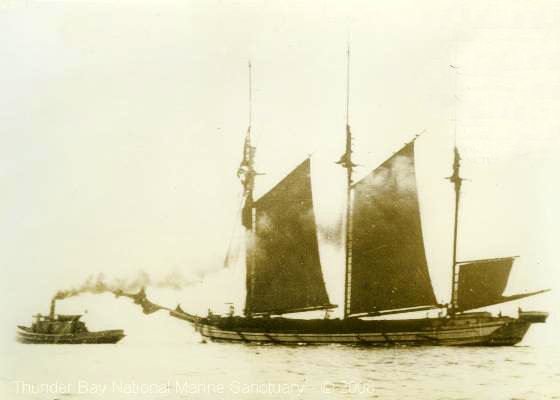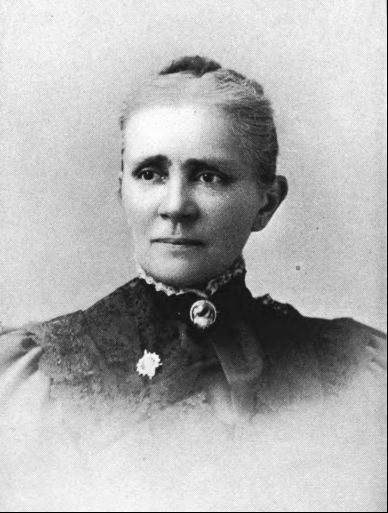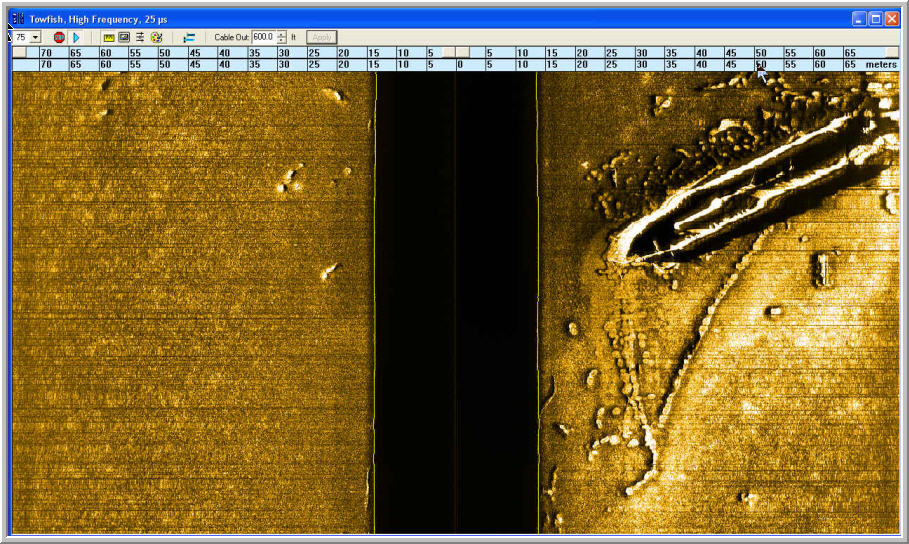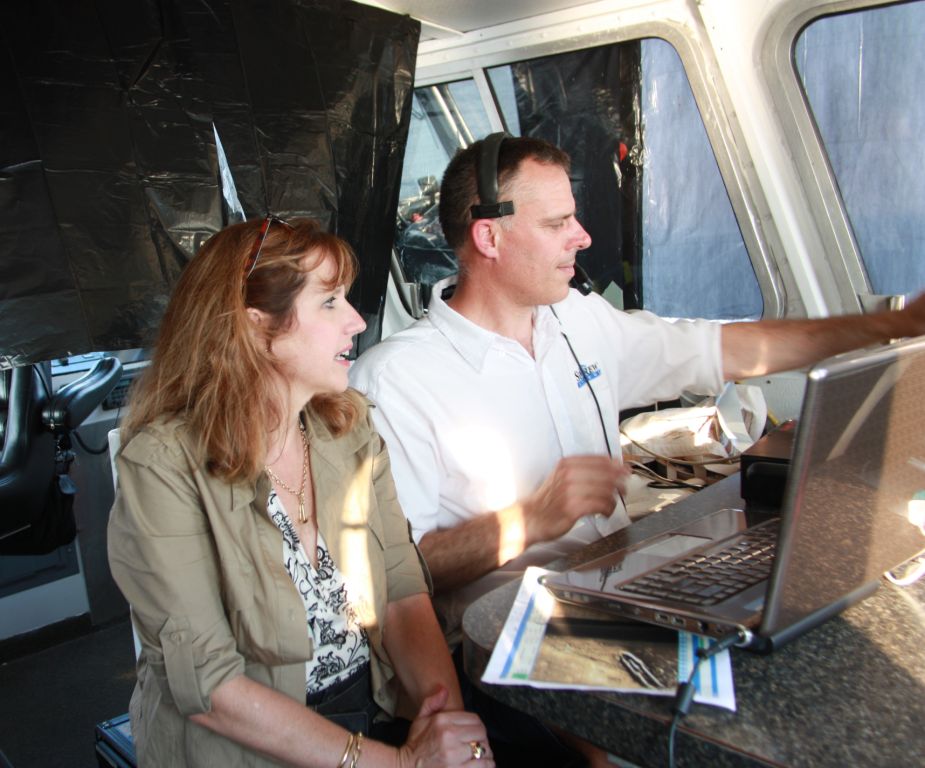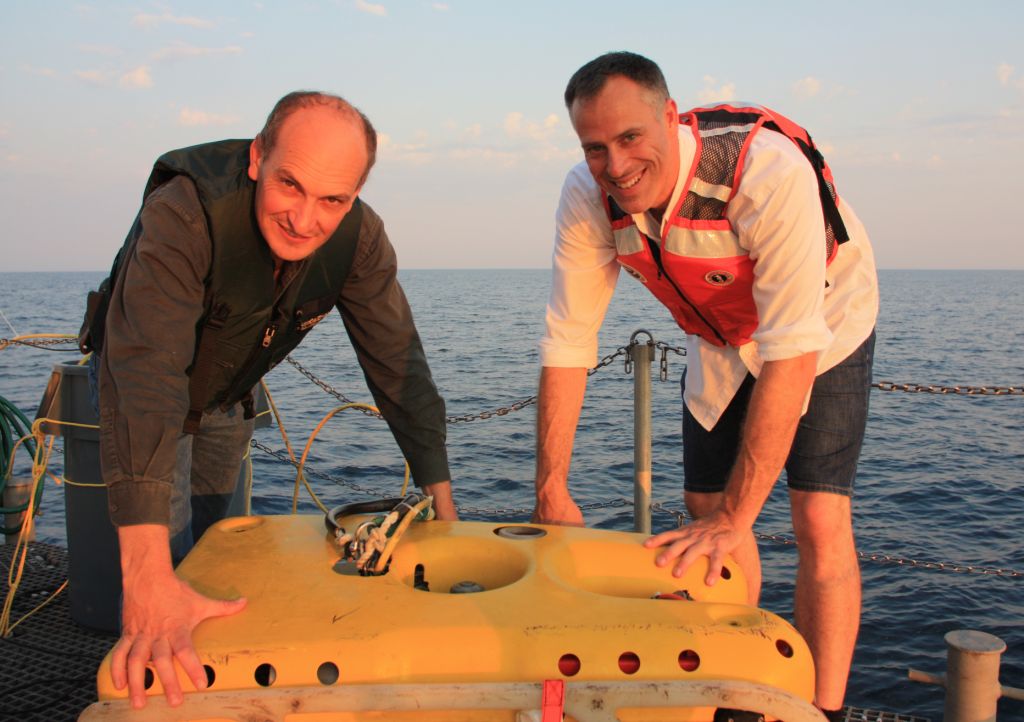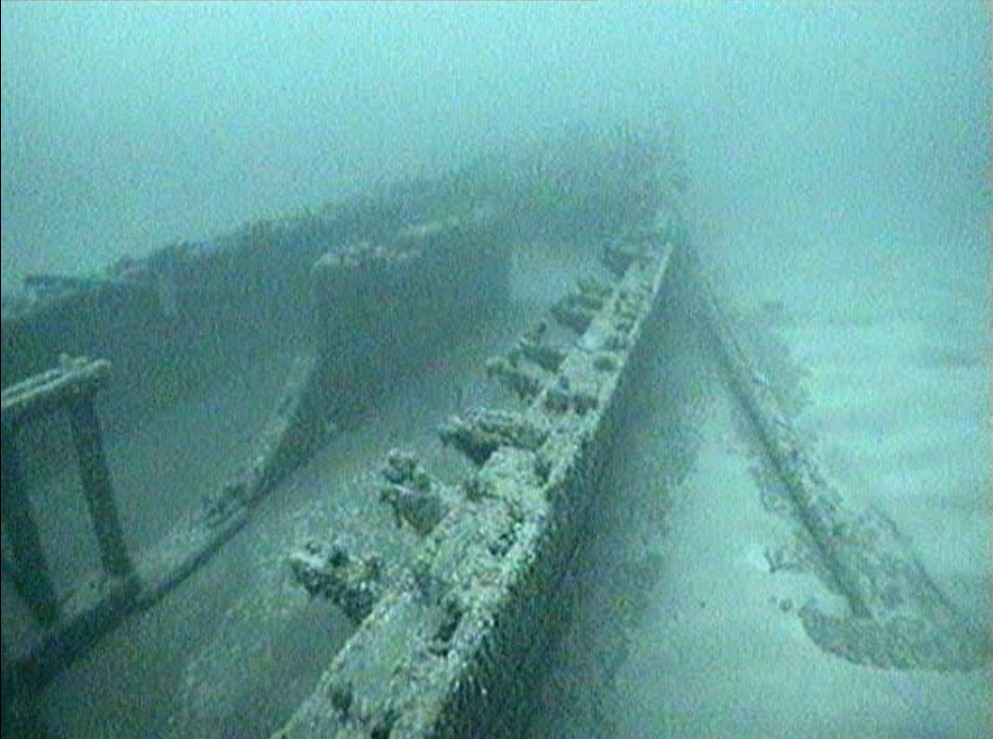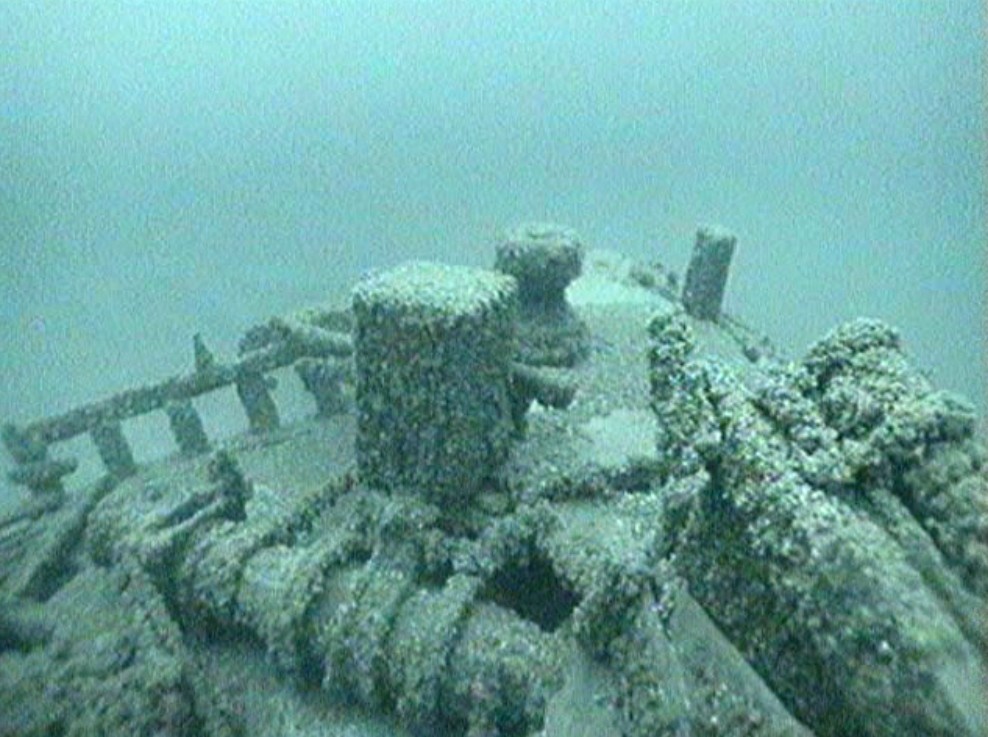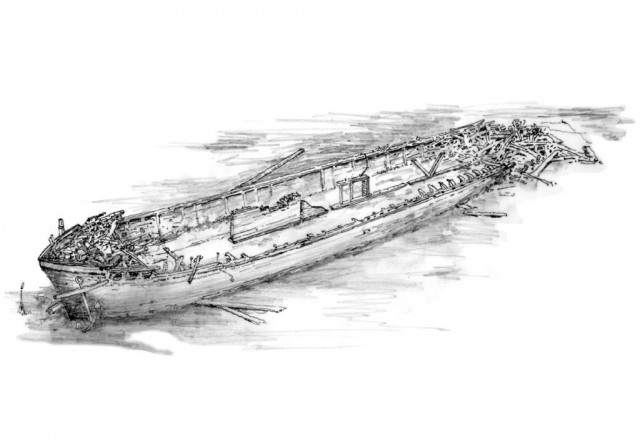42.19.9663 x 86.43.5318
A little known schooner barge, which slid under the waves quietly during a storm the same year the Titanic sank, has become one of Lake Michigan’s newest dive sites.
Discovered in April 2009 during the annual search effort sponsored by MSRA, with Clive Cussler’s National Underwater Marine Association, the Hattie Wells was one of three wrecks found that year.
The Hattie Wells was built in Port Huron, Michigan by the shipbuilders Stewart & Fitzgerald in the year 1867. The three-masted schooner had a length of 135’, with a beam of 26’, and a depth of 11’. The Wells, along with many other boats which enjoyed lengthy careers on the lakes, had her share of accidents, repairs, and rebuilds over the years.
During November 1869 she recorded her first incident on Lake Erie. In April of 1871 she struck a Pier at Au Sable, damaging her steering gear. Later that year she lost her main boom on Lake Huron. In June of 1874, she collided with Bark Winona on Lake Michigan. In November of that same year she struck on the bar at Oswego.
In May of 1883, the Hattie Wells, while under tow from the steam barge Rhoda Stewart, was badly damaged on Lake Erie, near Leamington. She collided with the schooner Lucy J. Clark, which struck her on the starboard side, carrying away her fore and main rigging and smashing in her rail and bulwarks. The entire fore-rigging of the Clark was carried away. Both vessels were towed into Detroit. n November of that year, the Clark foundered off Cross Village in Lake Michigan.
During the winter of 1885 she was placed in the Wolverine Dry Dock and was cut in two and lengthened by 30 feet, giving her an overall length of 164 feet. She also received a thorough rebuild. Her improvements had a cost of about eight or nine thousand dollars.
On September 10, 1892, the Hattie Wells suffered one of the most unusual incidents of her long career. She was struck by lightning on Lake Erie, splitting her foremast. One sailor was injured — paralyzed from the waist down.
Two months later, on Saturday, November 18, 1892, the Hattie Wells went ashore west of Point Pelee. She was loaded with lumber, and found herself aground at about 5:00 am. The vessel was a total wreck, but the crew was saved. The $40,000 cargo of lumber lumber was insured with P. H. Fleming of Chicago, but the schooner was uninsured. The Wells had been bound from Bay City to Tonawanda.
Within a week, the Wells was reported as “rapidly going to pieces”. The following July, the Mc Morren Wrecking Company succeeded in raising the schooner. The boat was again brought to the Wolverine Dry Dock for a rebuild. On September 19, 1893, the rebuilt schooner floated out of dry dock and was quoted as being “as handsome as a picture”.
“Five Rescued From Barge Eighteen Miles off St. Joe”
Early in the morning of November 6, 1912, the Hattie Wells left Waukegan, Illinois under tow of the tug James H. Martin for the port of Muskegon, Michigan. She was loaded with 66,000 feet of hemlock as well as elm and pine. A heavy sea was running when the tug and barge left the Illinois port. The wind continued to pick up throughout the day, until a Northwest gale was blowing strong.
Seas continually swamped the barge and soon a part of her deck cargo was carried away. A small pilot house on the barge containing a donkey engine was wrecked by the shifting cargo and the engine was put out of commission. This rendered the pumps useless. As darkness began to settle in, the tug’s crew and captain realized that the barge was sinking and that the crew of five on the barge soon would be lost.
The tow line was cut and the tug turned around and began the rescue of the five men on the barge. It was pitch dark and the seas were mountainous. A heavy sea swept the tug against the barge and one man on the bigger boat jumped onto the deck of the tug.
The danger of collision was great but Captain MacKinnon worked his tug close to the barge and tossed a life line aboard. Then, hand over hand, the five sailors fought their way by the aid of the line through the cold and mountainous seas to the tug and were pulled aboard. The names of the rescued men were Edward Brabant, George Leimere, Ferry Laduron, Ed Fisher, and Ernest Vance. All of the men were from Manistee, Michigan. At the time of the loss, the barge and tug were owned by Captain MacKinnon and William Scott.
Two teenage stewardesses aboard the James H. Martin, Margaret La Joyce and Elizabeth De Beck, shamed the sailors with their determination and courage. An admiring Caption MacKinnon declared later that “the girls were the bravest of us all.” La Joyce and De Beck stood on the deck through the worst part of the rescue, braving the icy waves spraying over them as they cheered on the crew. Some of the Martin’s sailors had argued against bringing the tug up alongside the barge, but the girls berated them for cowardice and begged MacKinnon to do everything possible to save those on the Hattie Wells. “In a tight pinch, give me a woman for courage” MacKinnon declared.
The Martin made port at St. Joseph, Michigan just after midnight. The following afternoon, Captain MacKinnon put out with the intention of scouring the lake for the barge. He left word with the life savers that if he picked up the scow he would return to port, but that if he only found floating lumber he would head his tug north and continue on to his home in Menominee. He never returned.
Matt & Geoff of Seaview Systems ready the ROV for deployment
Watch as MSRA surveys the Hattie Wells with SeaView Systems:


